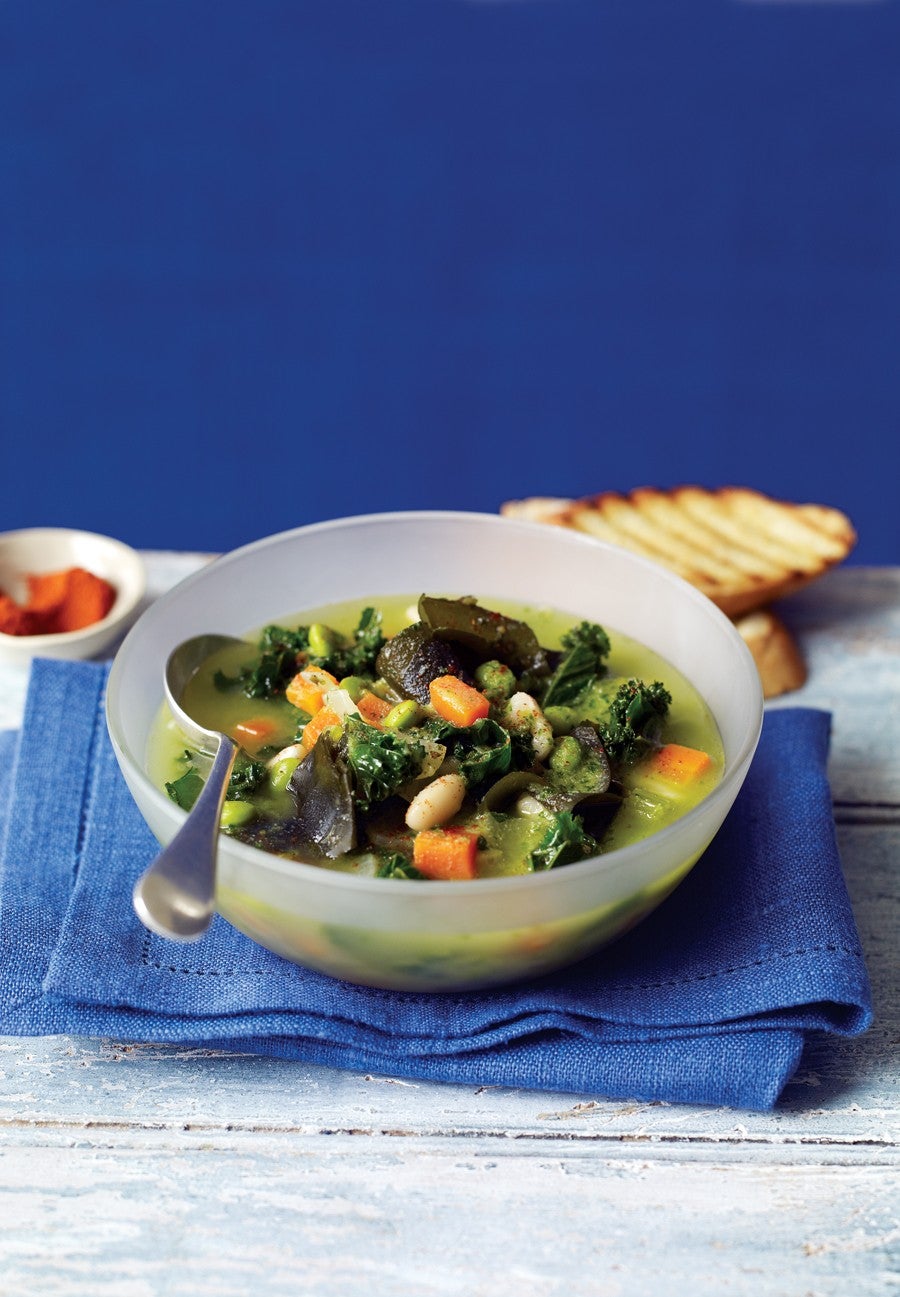Deep Sea Treasures

If the term “sea vegetables” makes you think of kelp that squishes between your toes at low tide, it’s time to catch the wave of these true wonder foods.
Sea vegetables are a rich food source of iodine, a trace mineral that’s crucial for healthy thyroid function. “Seaweed is also used to help balance female hormones, and in traditional Chinese medicine, to treat fibrocystic breast disease and uterine fibroids,” says Terry Grossman, MD, coauthor of Transcend: Nine Steps to Living Well Forever.
When properly prepared, sea vegetables have a firm, chewy texture and a rich, salty flavor. Try them in the following recipes, and experiment with several varieties in your everyday cooking; you’ll love what the tide brings in.
SEA VEGETABLE CHEAT SHEET
Slip sea vegetables into your favorite recipes with this handy guide
Wakame
Mild and slightly sweet, wakame turns bright emerald after soaking.
Preparation Soak 15 minutes until soft; drain, and rinse. Heat gently, if at all; wakame gets slimy when cooked.
Uses Boosts the flavor and nutrition of lentils, greens, soups, and salads.
Hijiki
Similar to arame, hijiki is bolder in flavor, with anise-like undertones.
Preparation Soak 10 minutes in cold water; drain, rinse.
Uses Stands up well to cooking; can be used to flavor root vegetables, mushrooms, and beans.
Nori
Thin, dark green or brown sheets most often used as sushi wrappers. Sold toasted or raw.
Preparation No soaking required; avoid cookingnori quickly disintegrates.
Uses Cut into strips to use as garnish for salads, hummus, soups, vegetables, or rice.
Arame
Wiry dark brown strands with a mildly sweet flavor and chewy texture.
Preparation Soak 10 minutes in cold water; drain, rinse, and chop into smaller pieces, if desired.
Uses Arame’s dark hue contrasts beautifully with winter squash, leafy greens, or white beans. Try in brothy soups as well.
Kombu
Wide strips or sheets of dark-colored dried sea kelp, kombu adds depth to slow-cooked dishes with its pronounced flavor.
Preparation No soaking necessary; add directly to hot cooking liquids.
Uses Best as a flavoring agent in broths, soups, and stews. Remove before serving.
Dulse
Red leaves or flakes with a salty, earthy taste.
Preparation Soak 10 minutes in hot or cold water; drain, and rinse.
Uses Good in soups, stews, and sauces. Can be used to replace hijiki or wakame.